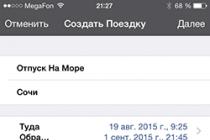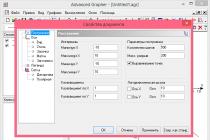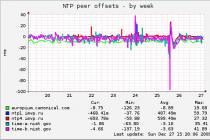Much of the websites have a registration form for your users to sign up and thus may benefit from some kind of privilege within the site. In this article we will see how to create a registration form in PHP and MySQL.
We will use simple tags and also we will use table tag to design the Sign-Up.html webpage. Let’s start:
Listing 1 : sign-up.html
Sign-Up Registration Form
| Name | |
| UserName | |
| Password | |
| Confirm Password | |
Figure 1:
Description of sing-in.html webpage:As you can see the Figure 1, there is a Registration form and it is asking few data about user. These are the common data which ask by any website from his users or visitors to create and ID and Password. We used table tag because to show the form fields on the webpage in a arrange form as you can see them on Figure 1. It’s looking so simple because we yet didn’t used CSS Style on it now let’s we use CSS styles and link the CSS style file with sing-up.html webpage.
Listing 2 : style.css
/*CSS File For Sign-Up webpage*/ #body-color{ background-color:#6699CC; } #Sign-Up{ background-image:url("sign-up.png"); background-size:500px 500px; background-repeat:no-repeat; background-attachment:fixed; background-position:center; margin-top:150px; margin-bottom:150px; margin-right:150px; margin-left:450px; padding:9px 35px; } #button{ border-radius:10px; width:100px; height:40px; background:#FF00FF; font-weight:bold; font-size:20px; }
Listing 3 : Link style.css with sign-up.html webpage

Figure 2:
Description of style.css file:In the external CSS file we used some styles which could be look new for you. As we used an image in the background and set it in the center of the webpage. Which is become easy to use by the help of html div tag. As we used three div tag id’s. #button, #sing-up, and #body-color and we applied all CSS styles on them and now you can see the Figure 2, how much it’s looking beautiful and attractive. You can use many other CSS styles as like 2D and 3D CSS styles on it. It will look more beautiful than its looking now.
After these all simple works we are now going to create a database and a table to store all data in the database of new users. Before we go to create a table we should know that what we require from the user. As we designed the form we will create the table according to the registration form which you can see it on Figure 1 & 2.
Listing 3 : Query for table in MySQL
CREATE TABLE WebsiteUsers (userID int(9) NOT NULL auto_increment, fullname VARCHAR(50) NOT NULL, userName VARCHAR(40) NOT NULL, email VARCHAR(40) NOT NULL, pass VARCHAR(40) NOT NULL, PRIMARY KEY(userID));
Description of Listing 3:One thing you should know that if you don’t have MySQL facility to use this query, so should follow my previous article about . from this link you will able to understand the installation and requirements. And how we can use it.
In the listing 3 query we used all those things which we need for the registration form. As there is Email, Full name, password, and user name variables. These variable will store data of the user, which he/she will input in the registration form in Figure 2 for the sing-up.
After these all works we are going to work with PHP programming which is a server side programming language. That’s why need to create a connection with the database.
Listing 4 : Database connection
Description of Listing 4:We created a connection between the database and our webpages. But if you don’t know is it working or not so you use one thing more in the last check listing 5 for it.
Listing 5 : checking the connection of database connectivity
Description Listing 5:In the Listing 5 I just tried to show you that you can check and confirm the connection between the database and PHP. And one thing more we will not use Listing 5 code in our sing-up webpage. Because it’s just to make you understand how you can check the MySQL connection.
Now we will write a PHP programming application to first check the availability of user and then store the user if he/she is a new user on the webpage.
Listing 6 : connectivity-sign-up.php
Description of connectivity-sign-up.phpIn this PHP application I used simplest way to create a sign up application for the webpages. As you can see first we create a connection like listing 4. And then we used two functions the first function is SignUP() which is being called by the if statement from the last of the application, where its first confirming the pressing of sign up button. If it is pressed then it will call the SingUp function and this function will use a query of SELECT to fetch the data and compare them with userName and email which is currently entered from the user. If the userName and email is already present in the database so it will say sorry you are already registered
If the user is new as its currently userName and email ID is not present in the database so the If statement will call the NewUser() where it will store the all information of the new user. And the user will become a part of the webpage.

Figure 3
In the figure 3, user is entering data to sign up if the user is an old user of this webpage according to the database records. So the webpage will show a message the user is registered already if the user is new so the webpage will show a message the user’s registration is completed.

Figure 4:
As we entered data to the registration form (Figure 4), according to the database which userName and email we entered to the registration form for sing-up it’s already present in the database. So we should try a new userName and email address to sign-up with a new ID and Password.

Figure 5
In figure 5, it is confirming us that which userName and email id user has entered. Both are not present in the database records. So now a new ID and Password is created and the user is able to use his new ID and Password to get login next time.
Conclusion:In this article we learnt the simplest way of creating a sign up webpage. We also learnt that how it deals with the database if we use PHP and MySQL. I tried to give you a basic knowledge about sign up webpage functionality. How it works at back end, and how we can change its look on front end. For any query don’t hesitate and comment.
Если вам необходимо сделать один из разделов своего сайта доступным ограниченному, но неопределенному кругу лиц, проще всего это сделать с помощью регистрации и авторизации пользователей. Есть множество способов авторизации пользователей. Можно использовать как инструменты веб-сервера, так и инструменты языка программирования. Мы поговорим о случае, когда используются сессии PHP .
Вероятно, вы хотели бы увидеть более современный способ создания такой формы. Полное его современное и актуальное представление у меня пока что еще в планах, но зато вы можете увидеть, что форму обратной связи можно построить с помощью объектно-ориентированных приемов в PHP.
Для начала давайте оговорим все шаги, которые сделаем далее. Что нам вообще нужно? Нам нужен сценарий, который будет регистрировать пользователя, авторизовать пользователя, переадресовывать пользователя куда-либо после авторизации. Также нам нужно будет создать страницу, которая будет защищена от доступа неавторизованных пользователей. Для регистрации и авторизации нам необходимо будет создать HTML -формы. Информацию о зарегистрированных пользователях мы будем хранить в базе данных. Это значит, что нам еще нужен скрипт подключения к СУБД . Всю работу у нас будут выполнять функции, которые мы сами напишем. Эти функции мы сохраним в отдельный файл.
Итак, нам нужны следующие файлы:
- соединение с СУБД;
- пользовательские функции;
- авторизация;
- регистрация;
- защищенная страница;
- сценарий завершения работы пользователя;
- сценарий, проверяющий статус авторизации пользователя;
- таблица стилей для простейшего оформления наших страниц.
Всё это будет бессмысленно, если у вас нет соответствующей таблицы в базе данных. Запустите инструмент управления своим СУБД (PhpMyAdmin или командную строку, как удобнее) и выполните в нем следующий запрос:
CREATE TABLE `users` (`id` int(11) NOT NULL AUTO_INCREMENT, `login` char(16) NOT NULL, `password` char(40) NOT NULL, `reg_date` timestamp NOT NULL DEFAULT CURRENT_TIMESTAMP, PRIMARY KEY (`id`)) ENGINE=MyISAM DEFAULT CHARSET=utf8 AUTO_INCREMENT=1 ;
Наши файлы со сценариями я назову так (все они будут лежать в одном каталоге):
- database.php;
- functions.php;
- login.php;
- registration.php;
- index.php;
- logout.php;
- checkAuth.php;
- style.css.
Назначение каждого из них, я уверен, вам понятно. Начнем со скрипта соединения с СУБД. Вы его уже видели . Просто сохраните код этого скрипта в файле с именем database.php . Пользовательские функции мы будем объявлять в файле functions.php . Как это всё будет работать? Неавторизованный пользователь пытается получить доступ к защищенному документу index.php , система проверяет авторизован ли пользователь, если пользователь не авторизован, он переадресовывается на страницу авторизации. На странице авторизации пользователь должен видеть форму авторизации. Давайте сделаем её.
Авторизация пользователей Ваш логин: Ваш пароль:
зарегистрируйтесь.
Теперь нашей форме нужно придать некий вид. Заодно определим правила для других элементов. Я, забегая вперед, приведу содержимое таблицы стилей полностью.
/* файл style.css */ .row { margin-bottom:10px; width:220px; } .row label { display:block; font-weight:bold; } .row input.text { font-size:1.2em; padding:2px 5px; } .to_reg { font-size:0.9em; } .instruction { font-size:0.8em; color:#aaaaaa; margin-left:2px; cursor:default; } .error { color:red; margin-left:3px; }
Если всё сделано верно, у вас в броузере должно быть следующее:
Конечно же у нас нет пока ни одного зарегистрированного пользователя, и чтобы авторизоваться, нужно зарегистрироваться. Давайте сделаем форму регистрации.
Регистрация пользователей Укажите ваш логин: Регистрация пользователей Укажите ваш логин:
- “$_POST[…]” is the PHP array
- This is the built in PHP super global array variable that is used to get values submitted via HTTP GET method.
- The array variable can be accessed from any script in the program; it has a global scope.
- This method displays the form values in the URL.
- It’s ideal for search engine forms as it allows the users to book mark the results.
It has the following syntax.
- “$_GET[…]” is the PHP array
- “"variable_name"” is the URL variable name.
| Values not visible in the URL | Values visible in the URL |
| Has not limitation of the length of the values since they are submitted via the body of HTTP | Has limitation on the length of the values usually 255 characters. This is because the values are displayed in the URL. Note the upper limit of the characters is dependent on the browser. |
| Has lower performance compared to Php_GET method due to time spent encapsulation the Php_POST values in the HTTP body | Has high performance compared to POST method dues to the simple nature of appending the values in the URL. |
| Supports many different data types such as string, numeric, binary etc. | Supports only string data types because the values are displayed in the URL |
| Results cannot be book marked | Results can be book marked due to the visibility of the values in the URL |
The below diagram shows the difference between get and post


The registration form submits data to itself as specified in the action attribute of the form.
When a form has been submitted, the values are populated in the $_POST super global array.
We will use the PHP isset function to check if the form values have been filled in the $_POST array and process the data.
We will modify the registration form to include the PHP code that processes the data. Below is the modified code
Registration Form //this code is executed when the form is submitted Thank You
You have been registered as
Go back to the form
Registration Form First name:Last name: checks if the form_submitted hidden field has been filled in the $_POST array and display a thank you and first name message.
If the form_fobmitted field hasn’t been filled in the $_POST array, the form is displayed.
More examples Simple search engineWe will design a simple search engine that uses the PHP_GET method as the form submission type.
For simplicity’s sake, we will use a PHP If statement to determine the output.
We will use the same HTML code for the registration form above and make minimal modifications to it.
Simple Search Engine Search Results For
The GET method displays its values in the URL
Sorry, no matches found for your search term
Go back to the form
Simple Search Engine - Type in GET Search Term:View the above page in a web browser
The following form will be shown

Type GET in upper case letter then click on submit button.
The following will be shown

The diagram below shows the URL for the above results
Note the URL has displayed the value of search_term and form_submitted. Try to enter anything different from GET then click on submit button and see what results you will get.
Working with check boxes, radio buttonsIf the user does not select a check box or radio button, no value is submitted, if the user selects a check box or radio button, the value one (1) or true is submitted.
We will modify the registration form code and include a check button that allows the user to agree to the terms of service.
Registration Form
You have not accepted our terms of service
Thank YouYou have been registered as
Go back to the form
Registration Form First name:Last name:
Agree to Terms of Service:
View the above form in a browser
У Вас в браузере заблокирован JavaScript. Разрешите JavaScript для работы сайта!
Работа с формамиДля передачи данных от пользователя Web-страницы на сервер используются HTML-формы. Для работы с формами в PHP предусмотрен ряд специальных средств.
Предварительно определенные переменныеВ PHP существует ряд предварительно определенных переменных, которые не меняются при выполнении всех приложений в конкретной среде. Их также называют переменными окружения или переменными среды. Они отражают установки среды Web-сервера Apache, а также информацию о запросе данного браузера. Есть возможность получить значения URL, строки запроса и других элементов HTTP-запроса.
Все предварительно определенные переменные содержатся в ассоциативном массиве $GLOBALS . Кроме переменных окружения этот массив содержит также глобальные переменные, определенные в программе.
Пример 1 Просмотр массива $GLOBALSВ результате на экране появится список всех глобальных переменных, включая переменные окружения. Наиболее часто используемые из них:
| $_SERVER["HTTP_USER_AGENT"] | Название и версия клиента | Mozilla/5.0 (compatible; Googlebot/2.1; +http://www.google.com/bot.html) |
| $_SERVER["REMOTE_ADDR"] | IP-адрес | 144.76.78.4 |
| getenv("HTTP_X_FORWARDED_FOR") | Внутренний IP-адрес клиента | |
| $_SERVER["REQUEST_METHOD"] | Метод запроса (GET или POST ) | GET |
| $_SERVER["QUERY_STRING"] | При запросе GET закодированные данные, передаваемые вместе с URL | |
| $_SERVER["REQUEST_URL"] | Полный адрес клиента, включая строку запроса | |
| $_SERVER["HTTP_REFERER"] | Адрес страницы, с которой был сделан запрос | |
| $_SERVER["PHP_SELF"] | Путь к выполняемой программе | /index.php |
| $_SERVER["SERVER_NAME"] | Домен | сайт |
| $_SERVER["REQUEST_URI"] | Путь | /php/php_form.php |
PHP-программу обработки ввода можно отделить от HTML-текста, содержащего формы ввода, а можно расположить на одной странице.
Пример 2 Пример обработки ввода













